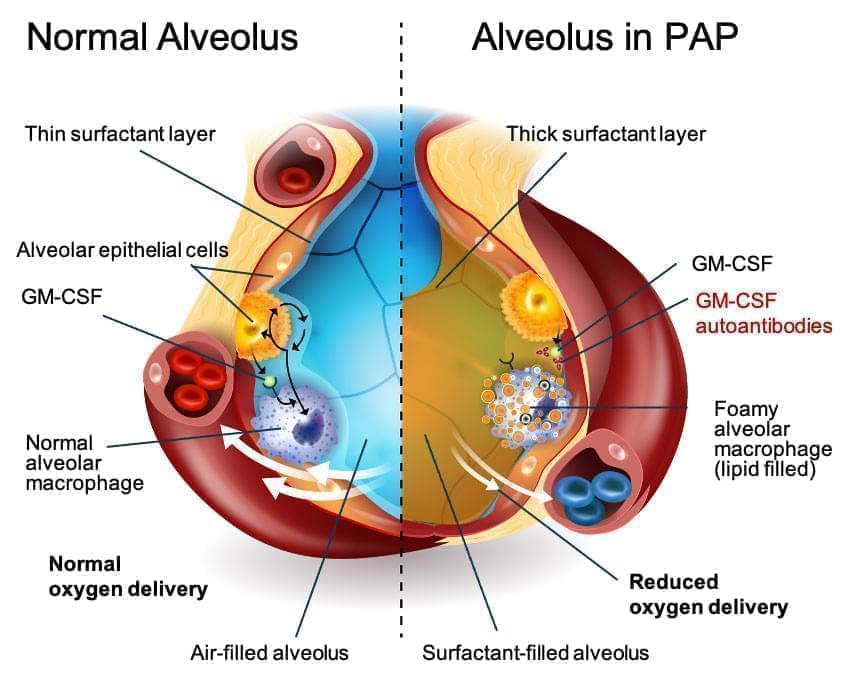

What is aPAP?

The root cause of aPAP is an autoimmune response against granulocyte-macrophage colony-stimulating factor (GM-CSF). GM-CSF is a naturally occurring protein in the body and is required for immune cells, called macrophages, to properly clear surfactant from the alveoli.
But, in a lung with aPAP, GM-CSF is neutralized by antibodies, rendering macrophages unable to clear surfactant from the alveoli.
Surfactant accumulation causes altered gas exchange in the lungs, reduced blood oxygenation, and, ultimately, hypoxemic respiratory failure.
Common symptoms of aPAP
The need for a convenient and efficacious medicinal treatment
Today, there are no approved pharmaceutical treatments available for aPAP. The current standard-of-care is a Whole Lung Lavage (WLL), which does not treat the underlying cause of the disease. WLL is a procedure, performed under general anesthesia, that physically removes surfactant from the lungs. During a WLL, one lung is mechanically ventilated while the other is repeatedly filled with, on average, 15-50 liters of saline. The chest is then percussed (“clapped”) to mix the surfactant with the saline and then drained to remove the saline and surfactant sediment. Due to the percussing, it is not uncommon for patients to experience bruising or cracked ribs following the procedure. WLL is an invasive and inconvenient procedure that must be performed by highly experienced physicians at specialist sites and necessitates hospitalization and admission to intensive care afterwards. It does not cure aPAP and may only provide temporary symptomatic relief. Because WLL does not treat the underlying cause of aPAP, the lungs refill with surfactant and the procedure may need to be repeated. There are no formal guidelines for performing WLL in patients with the disease.Learn more about aPAP
Explore background information